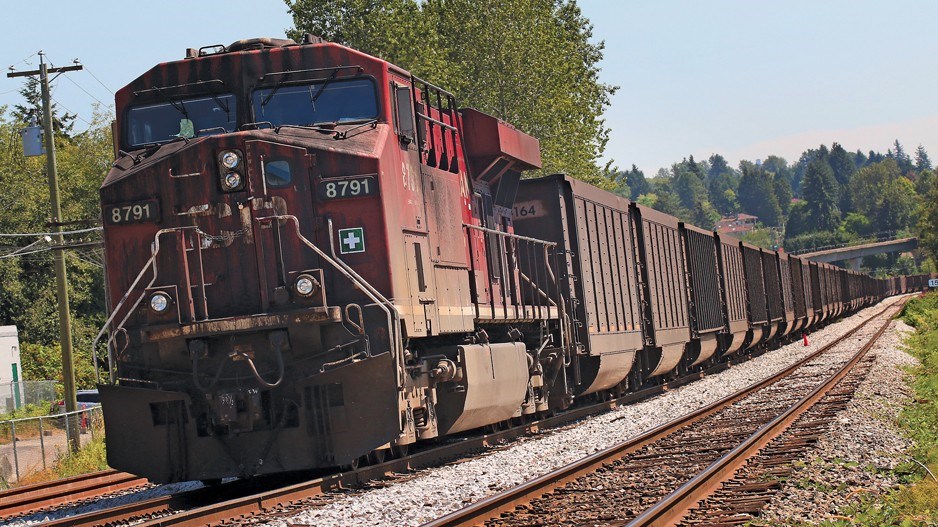All signs point to a lengthy wait before road and rail transportation linking the Port of Vancouver with the rest of Canada can be restored after last week’s major storm, and it’s a painful reminder of climate change’s growing impact on business costs in B.C.
That’s the opinion of a number of Canadian transportation and trade analysts, who added that the warning signs are now clearer than ever that transport infrastructure – especially infrastructure vital to maintaining supply chains – needs to pony up for higher climate-change mitigation costs in future planning of networks that support Canada’s trading economy.
“We need to be more proactive about planning for extreme events, because more extreme events are coming,” said Gordon Lovegrove, associated professor in civil engineering at the University of British Columbia’s Okanagan Campus and an expert on sustainable transportation and zero-emission rail.
“This is now the cost of doing business. Build your road and rail on higher, more solid ground. Storm drainage on all highways must now be rebuilt to account for torrential, tropical rain intensity and duration. You have to get ahead of the curve; you have to diversify your risk. Yes, you will have to pass that cost onto customers, but if you want to maintain your quality of life, you have to start paying for that risk.”
The rainstorm earlier this month created what some experts call a “once-per-50-years” weather event where massive flooding struck southwestern B.C., putting much of the Fraser Valley under water while mudslides, rockslides and washouts seriously damaged transportation links in the Fraser Canyon (Highway 1, CN/CP rail lines) and the Coquihalla (Highway 5).
The damage is so severe that officials from the province’s Ministry of Transportation still have not been able to fully assess the status of highways 1 and 5 or establish any clear timeline for repairing the two biggest road links between Vancouver and the rest of Canada.
Most experts, citing aerial photos of entire bridges and road portions being washed away, expect repairs to last at least several months before travel can resume.
Lovegrove estimates that about 40% of all freight in North America is transported by rail, with road trucking also playing a major role. As such, a blockage like the one created by the flooding in B.C. presents serious problems for producers throughout Canada who use Vancouver as their export point for foreign markets.
Carlo Dade, director of the Trade & Investment Centre at the Canada West Foundation, noted that the agricultural producers rely heavily on Vancouver as a jump-off point. Port alternatives such as Prince Rupert, Seattle-Tacoma (in Washington state) and Churchill, Manitoba, currently handle much smaller volumes than Vancouver.
As such, the damage done to roads and rail in B.C. presents a major challenge – and when the infrastructure is eventually rebuilt, a more holistic approach is needed to create a system that is much less vulnerable to shocks like the one brought on by the atmospheric river rainstorm.
“This is a lesson on the need for more thoughtful planning for trade infrastructure,” Dade said. “By thoughtful, I mean the thinking behind an integrated supply and production chain – and the assets that we need to achieve long-term goals. Those assets don’t just mean trade agreements, but also things like climate adaptation and mitigation of effects of global warming.
“And this only works if you have this ‘one system’ process for thinking about trade infrastructure. How are we using the money to rebuild? Are we going to repair just one part of the system and not deal with the entire system? We need long-term, rational planning based on data.”
However, as difficult as it is to think positively with the disaster’s impact still unfolding, both Dade and Lovegrove said the opportunity to rebuild an improved system may benefit Canada in the long run – if stakeholders are willing to absorb the upfront costs. Lovegrove, who is heading research efforts into hydrail – the conversion of conventional diesel freight trains to hydrogen fuel-cell/battery hybrids – said this is where government officials need to play an active role, because the private sector’s pace of change is often not fast enough.
“We really face an existential threat,” he said. “Businesses have the ability to be strategic on that front, but I don’t think they are there yet. … Rail companies – or any big business – want to have control of the pace of change, and the problem with that is that it’s not fast enough while it also creates a barrier to entry for smaller players. So you also need some enforcement; investments must go to towards the necessary upgrades.
“The Mandarin word for crisis is made up of two words: threat and opportunity,” Lovegrove concluded.
“There’s ancient wisdom there; let’s learn from history that, yes, we have a crisis now, and we have pain. But we can now say that the pain of not changing now, as we can see, is much more severe than the pain of changing.” •




